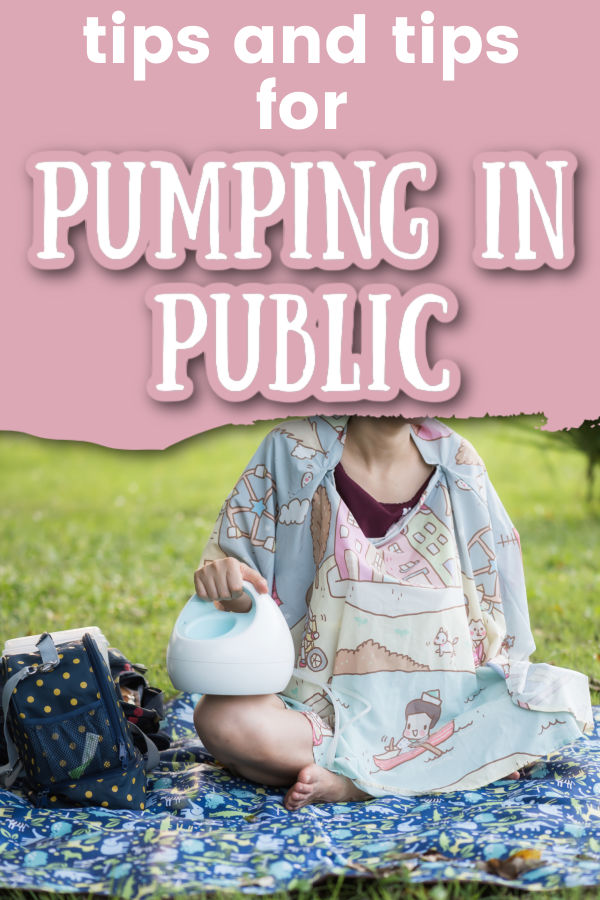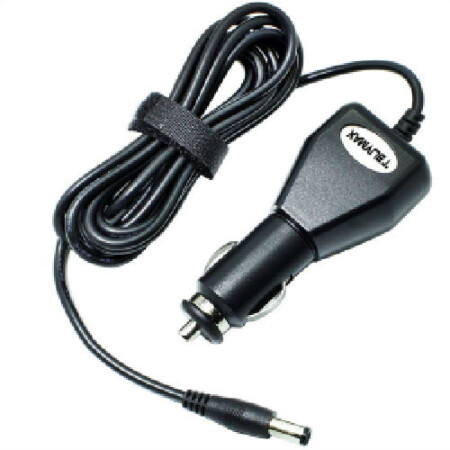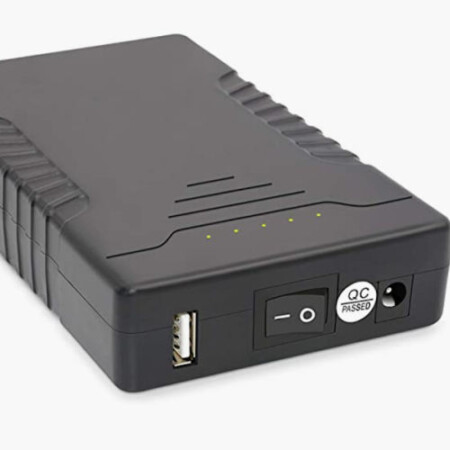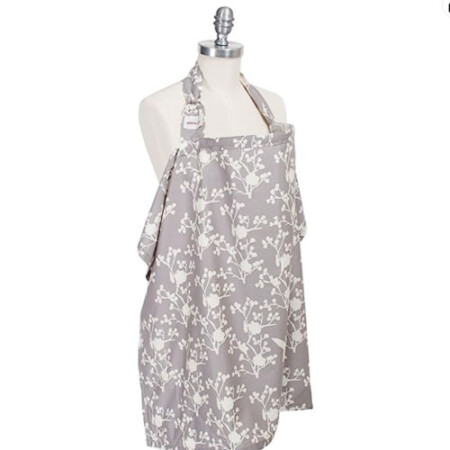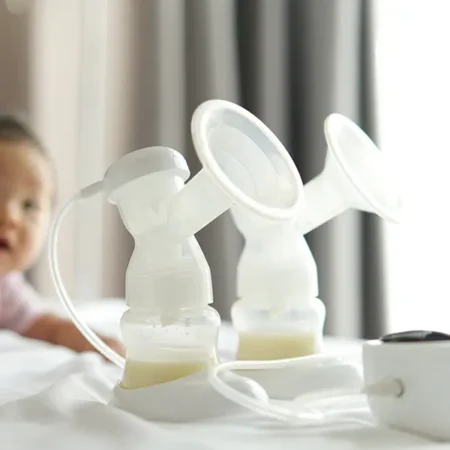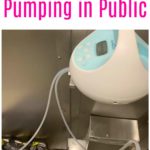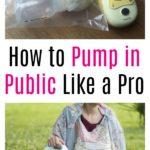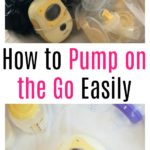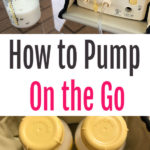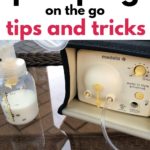If you are exclusively pumping, it’s a good idea to try to get comfortable with pumping in public. When you need to pump at home every three hours around the clock, it’s common to start feeling trapped and resentful. It makes life a lot easier if you can fit pumping around your life, rather than fitting your life around pumping.
But how do you pump on the go? We’ll go through everything you need to know.
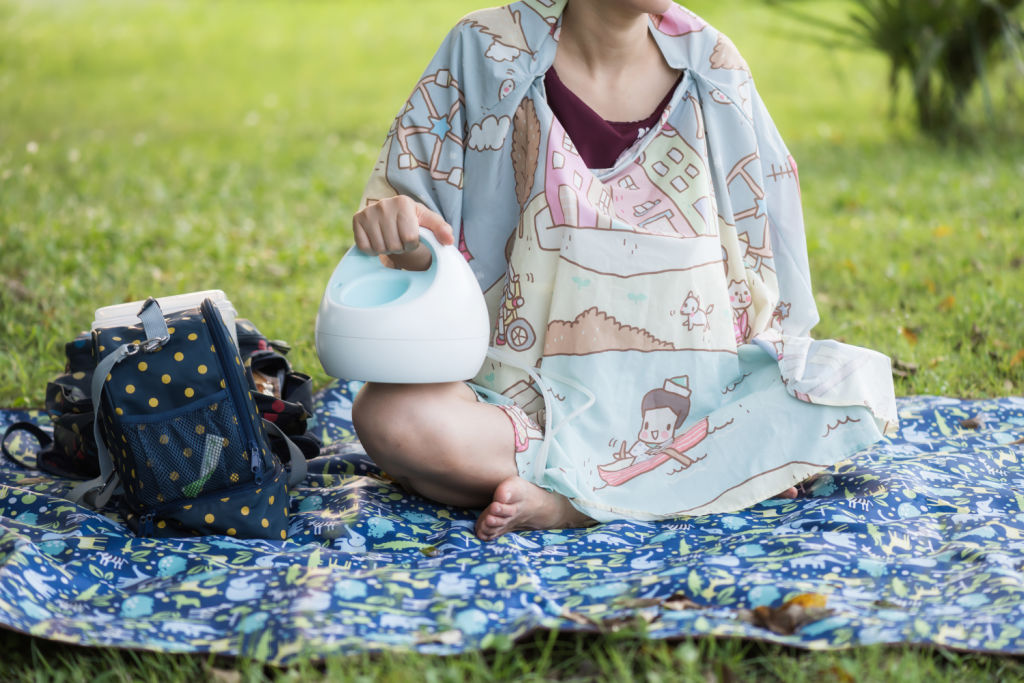
This post may contain affiliate links, which means if you click a link and purchase something, I may make a small commission at no additional cost to you. I only recommend products I love! More information here.
Tips and tricks for pumping on the go
Here are the key things that have helped me be successful with pumping in public.
1. Have a plan for powering your pump.
If you don’t have a portable pump, you’ll either need to plan to pump near an outlet, or have a battery pack.
There are a few different kinds of battery packs – car adaptors that plug into a vehicle lighter, rechargeable battery packs, and the type that use regular batteries.
Make sure you use the correct voltage for your pump – if your voltage is too low, the pump won’t work properly; if it’s too high, it will fry your pump.
Breast Pump Battery Packs
The other option is to use a manual pump. These can work really well if you don’t want to carry a huge breast pump bag (say, if you’re out at a bachelorette party or a wedding).
2. If you’d like, use a nursing cover (in your case, a breast pumping cover!)
I think you should pump however you feel most comfortable – whether that’s with a nursing cover or without.
Nursing Covers
Apron-style covers, where you have a strap around your neck holding up fabric over your chest, work well for pumping. So do poncho covers, which are a large poncho that goes over your head and covers your front and back, while allowing easy access underneath.
3. Have everything ready to go to minimize the time you spend setting yourself up to pump.
Before you leave the house, put your pump parts and bottles and everything together. Then, put them in a gallon-sized zip-top plastic bag or wet bag in your pump bag along with the caps for your bottles.
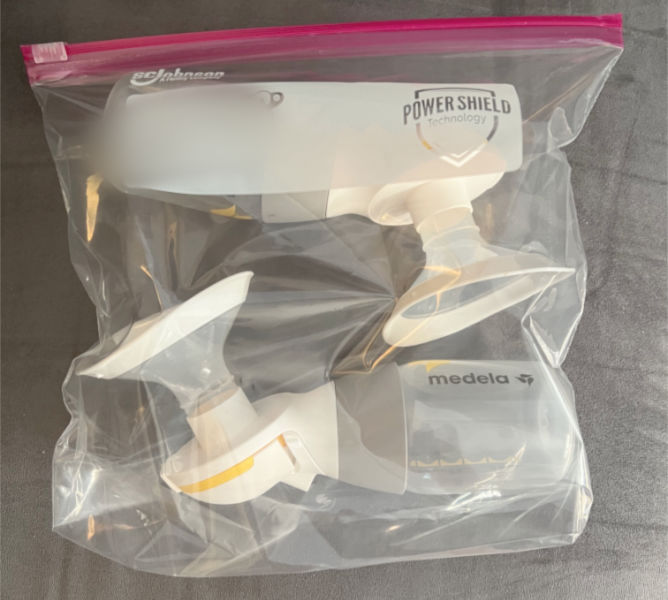
This is a great way to ensure that you don’t forget a pump part, like a valve or flange. It also minimizes the time you will need to spend fumbling with your gear when it’s time to pump.
Note: It’s really easy to forget the caps to the bottles, so make sure that you bring them with you. You can also stash some extra breast milk storage bags in your breast pump bag just in case.
When you’re ready to pump, you can just put on your nursing cover (if you’re using one), then your hands-free pumping bra, and finally attach your pump parts.
More on packing your pump bag (including a checklist) here.
4. Pump in public in an easy environment the first time.
There are two kinds of pumping in public scenarios: semi-public (for example, in your car, in a lactation pod, or in a family restroom) and out-in-the-open-public (such as sitting on a bench watching your older child play soccer).
It might be easiest to start with a semi-public situation, and then work your way up to other scenarios if and when you feel comfortable doing so.
For example, I started pumping in my car while my husband was driving. This helped me work out the kinks so that I felt like I knew what I was doing before moving on to (for example) pumping at an airport gate.
5. Act like you know what you‘re doing.
Even if you’re a little nervous about the idea of pumping on the go, try to fake it until you make it.
If you act like what you are doing is perfectly natural and no big deal, people are a lot more likely to not notice you. Most people are far too busy worrying about themselves and what’s going in their own lives to pay attention to you.
Additionally, having your partner or supportive friends around while you pump – at least at first – can be really helpful in making you feel more confident and less self-conscious.
6. Store your milk safely.
Depending on how long you’ll be away from your fridge, you may be able to leave the milk out at room temperature, or you may need a cooler.
Keep at room temperature
Breast milk can be kept at room temperature for about 4 hours.
If you’ll be feeding the milk to your baby within that timeframe, or if you’ll be home shortly after pumping, you may just be able to leave it at room temperature until then.
Use a cooler
If you’ll be out longer than that and will need to keep your milk cold, you have a few options:
- You can bring a breast milk cooler with an ice pack for storing your milk.
- Some breast pump bags have insulated compartments that can work well if you put your full bottles in them along with an ice pack.
- The Ceres Chill might be a good option if you pump on the go frequently – it’s a cooler than you can pump directly into. (They gave me a discount code – use EPUMP for 15% off!)
Breast Milk Coolers
Breast milk can be stored in a cooler with an ice pack for about 24 hours.
7. Store and (if necessary) clean your pump parts.
Once you’re done pumping, if you won’t be pumping again, you can place your pump parts back in the plastic zip-top bag or wet bag to wash when you get home.
If you will need to pump again and you won’t have access to a clean space to wash your pump parts, your two option include:
- Bringing multiple sets of pump parts and use a clean set for the next session
- Using Medela Quick-Clean Wipes
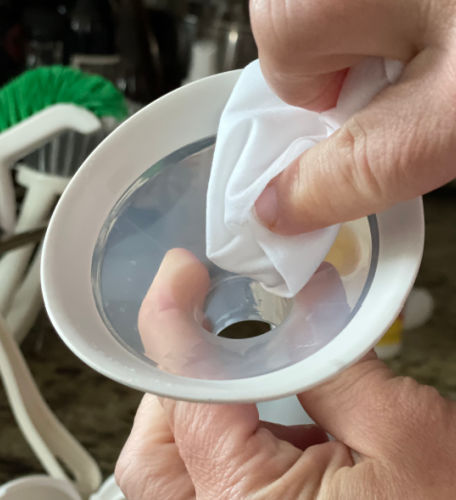
8. Have a sense of humor.
It’s inevitable that something will go wrong at some point. Maybe a curious toddler will come lift up your cover or you’ll run into your boss when you’re out and happen to be pumping.
Anticipate that this stuff might happen and try to see the humor in it. You probably will laugh about it one day, and it’ll be a good story!
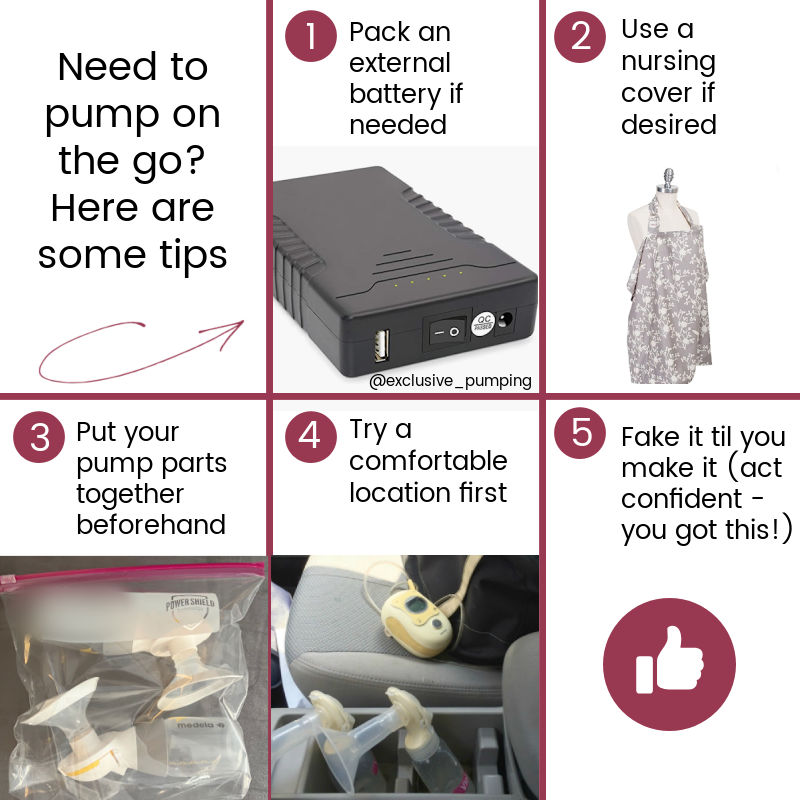
Hopefully this will help you get started with pumping in public! Feel free to leave additional tips or stories below in the comments.
References
- What to Expect. “Breastfeeding in Public: Tips and Laws for Nursing Mothers.” https://www.whattoexpect.com/first-year/breastfeeding/breastfeeding-in-public/
